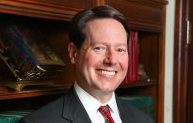by Mike Heitman
PALM BEACH GARDENS, FL – The newly inaugurated Biden Administration has campaigned on restoring the nation’s economy, healing our political divisions, and restoring our nation’s infrastructure. The selection of his cabinet, largely composed of veterans of the Obama administration, suggest that the President is looking to model his political agenda on that of the Obama administration.
The political and economic situation in 2021 is fundamentally different from the situation in 2008. There were fundamental problems with the banking and finance systems in 2008 that had to be corrected. Thankfully, in 2021 the underlying economy is sound and can be expected to right itself once the pandemic is over. While relief for those businesses and individuals who have been impacted by the pandemic is in order, there is really no justification for massive Keynesian pump priming that was undertaken by the Obama administration.

An administration that would serve as a more appropriate model would be that of Calvin Coolidge. The historical parallels are striking. Coolidge’s predecessor, Warren G. Harding, died in office and was disgraced by scandal. The country had massive debt from the First World War, and had just survived the Spanish flu pandemic of 1918 (675,000 Americans died in that pandemic).
The Coolidge administration stressed a return to “normalcy”—that is, having a regulatory and legal environment that allows for businesses to plan effectively for the future. Normalcy allows businesses to thrive by avoiding sudden massive swings to the right or to the left every two to four years.
The Coolidge Administration was able to reduce the National Debt from 22.3 Billion in 1923 to 16.9 Billion in 1929. The Coolidge administration stimulated the economy by reducing taxes, not increasing them. The deficit was reduced by reducing the size of government. Coolidge reduced the Federal budget from $5.1 billion in 1921 to $3.3 Billion in 1929.
Calvin Coolidge was also famously taciturn. He earned the nickname “silent Cal”. The story goes that he was once seated at a State dinner next to a lady who told him that she had taken a bet that she could get him to say more than three words. Coolidge’s response to her was only, “You lose”. While it wouldn’t be necessary for Joe Biden to go to that extreme, it would be refreshing to have a chief executive who was not constantly posting to his twitter account.
How might the Biden administration simultaneously improve the nation’s infrastructure and reduce the size of the federal budget? One obvious method is to finance infrastructure spending through public private partnerships (PPPs). The idea is that a private company pays the cost of the road or bridge and then has the right to charge consumers for use of that road or bridge. Instead of the maintenance being a tax liability for the government, the roadway becomes a source of revenue. By charging consumers for use of infrastructure, you avoid the free rider problem and reduce traffic.

PPPs are just one method of innovative delivery of government services that the new administration could embrace. The problem is that it would involve letting go of methods of service delivery that were developed in the eighteenth or nineteenth century and are now obsolete. The U.S. postal service is the most obvious example. The USPS was founded in 1775 by the second continental congress. Benjamin Franklin was the first postmaster general. It predates the constitution by 13 years. It is also one of the only monopolies to lose money every year.
The Biden administration stands at the threshold. It could follow the Obama administration, swing hard left, and increase taxes and regulation. If they take that route, look for a long slow recovery and for Democrats to lose the House and Senate in the 2022 mid-terms. On the other hand, we can hope that the Biden administration will apply the lessons of history and restore our nation to normalcy, fulfilling its election mandate.
Mike Heitman is an attorney with Nason Yeager, Palm Beach Gardens, Fla. Heitman was a civil engineer for a decade prior to getting his M.B.A. and his law degree.


